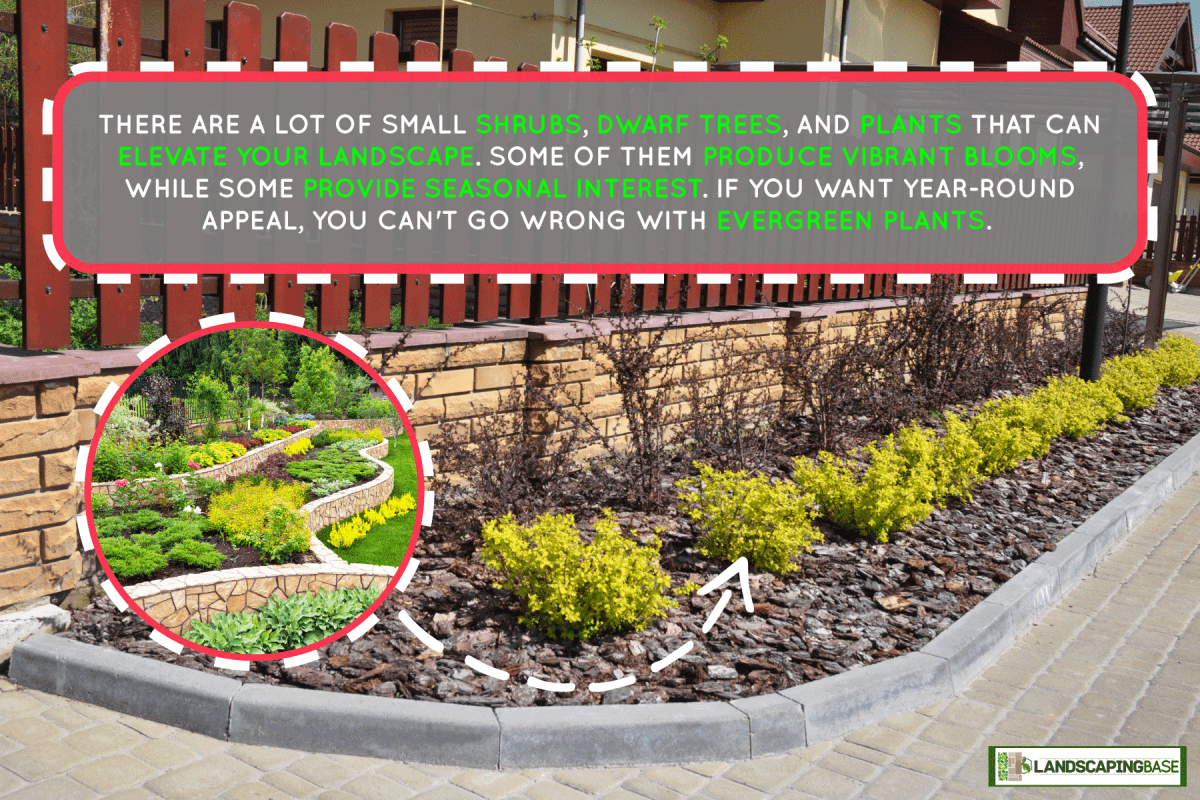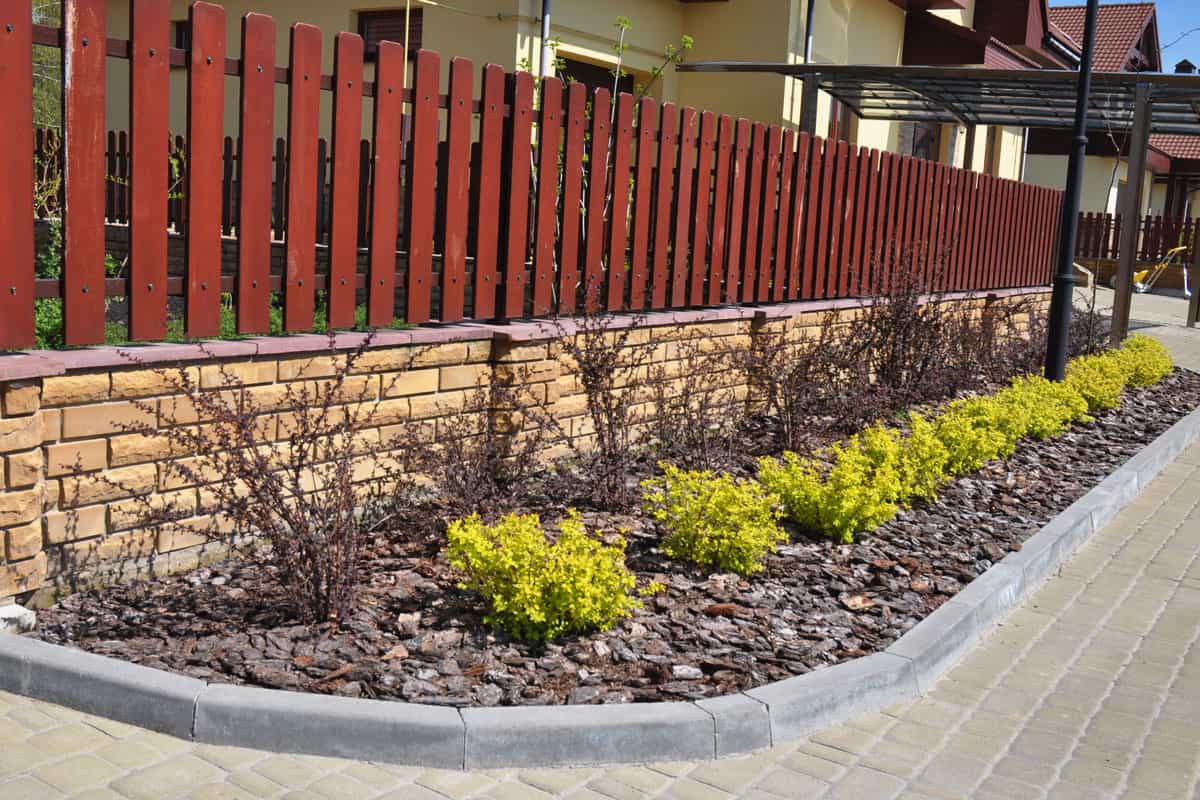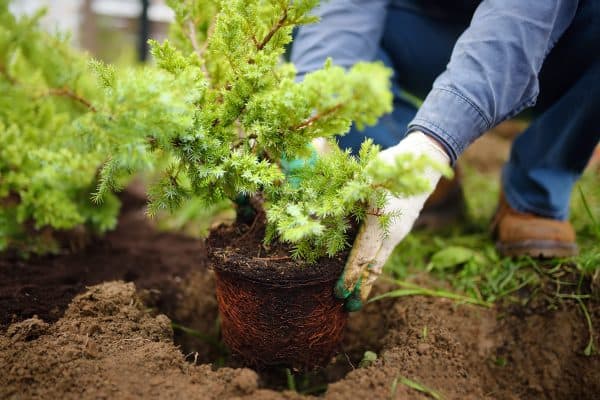Foundation plants are great for hiding unattractive spots around the house. They can make your landscape look lusher, and they add vibrance to the atmosphere of the outdoor space. However, how could you achieve a lush look if you have a small space? What if you have a narrow foundation?
There are a lot of small shrubs, dwarf trees, and plants that can elevate your landscape. Some of them produce vibrant blooms, while some provide seasonal interest. If you want year-round appeal, you can't go wrong with evergreen plants.
These plants will not only add color to your landscape but also improve your garden's ecosystem and make your outdoor space feel more refreshing as it releases crisp and fresh air.
However, the design of your landscape is just as—if not more—important as your plant choices when utilizing outdoor spaces. So, We have gathered 11 planting ideas that can dramatically transform your landscape and add significant value to your property.

1. Opt for Gravel and Stones
Gravel and stones can make your foundation planting design more solid and structured. Gravel gardens also have a unique appeal to them, enhancing your curb appeal. Aside from aesthetic appeal, gravel gardens also reduce water runoff which makes them more eco-friendly and relatively low-maintenance.
This Mediterranean-inspired landscape design is also kinder on the budget since you won't have to spend too much on lawn care. They are also drought-resistant since they seep in water easily, making them ideal for plants that require a lot of moisture.
2. Cut a Pathway in Between
If you have a narrow foundation or garden space, cutting a path between the plants is a great way to give the illusion of space. This is also ideal if you want to put more plants into your outdoor space but the foundation is too narrow.
When you put the plants on the other side of the makeshift pathway, make sure to maintain symmetry and balance to keep its visual appeal.
3. Add a Small Furniture or Fixture
One great way to make your small landscape look functional and cozy is to add pieces of furniture or structural designs near the plant beds. It is best if you have gravel instead of soil so the furniture or fixture will be firmly placed.
If you're planning to put in statues or furniture, make sure you put some space in between. You don't want the furniture to get cramped up by the abundance of plants, and you wouldn't want to get bitten by the ants that may hang out near the leaves.
4. Incorporate Vibrant Flowers
You can't go wrong with attractive flowers when planning the design for foundation planting. They are a great way to introduce color into your landscape, as well as improve your garden's ecosystem by attracting beneficial insects like butterflies and honeybees.
You can mix them with other evergreen plants to break up the colors for visual appeal, or you can create a small flowerbed on your foundation to make your home feel more vibrant and inviting.
If you're going to plant high-maintenance flowering plants, make sure to prune and trim them so they can keep their shape and form. You wouldn't want leggy flowers ruining your landscape and curb appeal.
5. Create a Sloped Design
If you want to put in a lot of plants but don't have enough space, you can create a sloped design to utilize what little space you do have.
You can build small terraces along your foundation, or you can simply plant larger plants at the back part of the foundation, cascading to smaller-sized plants to have that "sloped" look.
This will give more character and texture to your landscape, and your home will look lusher and teeming with greenery. Make sure you still give the plants enough space for proper aeration.
6. Plant Dwarf Conifers
Conifers such as dwarf varieties of arborvitae or white cedar can add character to your landscape.
Evergreen conifers also have year-round appeal and seasonal interest, especially during the holidays. You can decorate these dwarf conifers so you can have mini Christmas trees, enhancing curb appeal even with limited space.
Pair these conifers with other round-shaped shrubs to make the foundation plants more visually stimulating. Make sure they have enough space in between so their shapes can be emphasized.
Read: Arborvitae Vs. Juniper For Privacy.
7. Opt for Smaller Plants
Going for small plants and shrubs is the safest and easiest design route. They are easier to place into narrow foundations, and it's easier to space them so your foundation space wouldn't look too cramped. The adequate space will also improve the air circulation between plants, aiding their growth effectively.
You can stick with evergreens, but you can also try flowering plants although you may need to prune and trim them so they don't go out of control.
You can try planting white hydrangeas, sprinter boxwoods, or double-play doozie spireas. If you want to easily transfer them wherever you like, put them in pots.
Read: 11 Great West Facing Foundation Plants For Zone 5.
8. Plant Flowers Apart
Flower clusters can make your home look more inviting. You don't have to create a full flowerbed if you don't have enough space, or if you don't think you can maintain them. Small flower clusters spaced apart can still make your curb look appealing, and they won't look cramped together.
You can add other evergreens or shrubs to add texture to the design, but planting flowers alone could be enough.
You can try planting dome-shaped stonecrop flowers, or you can opt for Catmint. Ornamental onions will also look great formed into clusters near your foundation.
9. Plant Colorful Groundcovers
Colorful groundcovers can add visual interest to your landscape, and they can be paired with other shrubs or left alone. Either way, they will make your landscape vibrant and lush, as well as add texture to the space.
However, note that some flowering groundcovers only bloom for one or two seasons, so it may be better to pair them with evergreen plants. Make sure you check whether the flowering plants are hardy in your area.
You can try planting pink and dome-shaped Stonecrops since they are low-growing and can act as ground covers. Creeping phlox, hostas, and yellow alyssums can all introduce a burst of color into your landscape effortlessly.
Flowering groundcovers do not only provide aesthetic appeal--they also control erosion and fight off weeds so your garden can be kept healthy and thriving.
Read: What Ground Cover For Shade Under Rhododendrons?
10. Create Proportion with Plants
Maintaining symmetry is essential in every foundation, especially smaller ones. Regardless of how vibrant the plants are, if they are not planted strategically, the curb will look chaotic and disorganized.
One way to create proportion is to plant the bigger plants on either side of the foundation and keep the groundcovers sprawled in the center. Pepper the evergreen plants in the surrounding area to maintain visual appeal throughout the year when the flowers aren't blooming.
11. Keep a Balanced Look
Size isn't the only thing that would make your design more balanced. The colors of the flowers also play part in keeping a harmonious look in your landscape, especially narrow foundations. You can do this by matching the plants planted on one side to the other.
This will create a polished and effortlessly elegant look in your house, and it will make your house look more inviting.
This is essential especially if you are planting a lot of plants on your narrow foundation. Make sure to break up the colors with evergreens to create a more cohesive and balanced look.
Final Thoughts

There are a lot of design solutions you can explore even with narrow foundations. Plants are meant to enhance the visual quality of your landscape and improve your garden's ecosystem, so it's best to take advantage of their variety to enhance curb appeal and increase your home's value.
As always, make sure you go with your preferences when choosing flowers. Make sure they are compatible with your climate and the location of your landscape so they can thrive consistently.

![man replanting herb with yellow flowers for use in landscaping. 15 Perennials That Absorb Water [Incredible Choices For Foundation Landscaping]](https://landscapingbase.com/wp-content/uploads/2022/09/man-replanting-herb-with-yellow-flowers.-15-Perennials-That-Absorb-Water-600x400.png)
![Big custom made luxury house with nicely trimmed and landscaped front yard, South Facing Front Yard Landscaping Ideas [17 Ideas To Increase Your Curb Appeal]](https://landscapingbase.com/wp-content/uploads/2022/09/BIGCUS1-600x400.jpg)
